
Categories:
The AR-15 rifle has undeniably left an indelible mark on the world of modern sporting rifles. Developed in the 1950s by Eugene Stoner, this iconic gun has revolutionized the way we perceive and utilize rifles for recreational shooting, hunting, and self-defense. With its unmatched versatility, customizable features, and widespread popularity, the AR-15 has become a symbol of American gun culture. One of the key aspects that sets the AR-15 apart from traditional guns is its modular design.
The rifle’s “black rifle” aesthetic and its ability to accept various accessories have made it highly adaptable to meet individual preferences and specific needs. This flexibility has enabled shooters to personalize their rifles by adding different stocks, grips, handguards, optics, and other attachments. Moreover, the AR-15’s influence extends beyond aesthetics; it significantly impacted technical advancements in gun design. The introduction of lightweight materials like polymer and aluminum alloys revolutionized rifle construction techniques.
These advancements led to reduced weight without compromising structural integrity or performance. The widespread adoption of the AR-15 platform by military forces worldwide also contributed to its influence on modern sporting rifles. As military personnel became proficient with this versatile gun during their service, they sought similar capabilities in civilian models for recreational use.
The AR-15 platform, originally designed by Eugene Stoner in the 1950s, has undoubtedly had a profound influence on modern sporting rifles. Its history and development provide valuable insights into the evolution of guns technology. Originally known as the Armalite Rifle Model 15, the AR-15 was developed as a lightweight and versatile military rifle. It utilized innovative materials such as aluminum alloys and synthetic polymers, which significantly reduced its weight compared to traditional steel rifles.
This groundbreaking design allowed for improved maneuverability and handling. In 1959, Colt acquired the rights to manufacture and market the AR-15 for military use under the designation M16. However, due to its exceptional performance in combat during the Vietnam War, civilian versions of this rifle soon became popular. Over time, various manufacturers began producing their own versions of the AR-15 platform, leading to a diverse range of options available today.
The modularity of this design allows shooters to customize their guns with different barrels, stocks, grips, and accessories according to their specific needs and preferences. The widespread popularity of the AR-15 platform can be attributed to its reliability, ease of use, accuracy, and adaptability. It has become a staple choice for hunters, sport shooters, law enforcement agencies, and military forces worldwide.
The AR-15 rifle has undeniably become one of the most popular guns among civilian shooters in recent years. Its widespread popularity can be attributed to several factors that have contributed to its successful adoption. Firstly, the AR-15’s versatility and modularity have made it extremely appealing to gun enthusiasts. The platform allows for easy customization, with a wide range of accessories and components available on the market.
This adaptability appeals to shooters who enjoy personalizing their guns to suit their specific needs and preferences. Additionally, the AR-15’s ergonomic design has played a significant role in its widespread adoption. The rifle features a lightweight yet durable construction, making it comfortable to handle and shoot for extended periods. Its adjustable stock and pistol grip allow users to achieve a more comfortable shooting position, enhancing accuracy and control.
Furthermore, the AR-15’s ammunition availability is another contributing factor behind its popularity. Chambered in .223 Remington or 5.56x45mm NATO rounds, these calibers are widely produced and readily available at affordable prices across various retailers. Lastly, its association with military-style rifles has also fueled interest among civilian shooters seeking an authentic shooting experience or those who admire military aesthetics.
The AR-15 rifle has had a profound impact on military and law enforcement guns, revolutionizing the way these organizations approach combat and tactical situations. Originally developed as a lightweight, versatile weapon for the United States military, its influence has extended far beyond its original intended purpose. In military applications, the AR-15’s modularity and adaptability have made it an invaluable tool. Its lightweight design allows for easy maneuverability in various combat environments, while its customizable features enable soldiers to tailor it to their specific needs.
The ability to attach accessories such as scopes, grips, and flashlights greatly enhances accuracy and situational awareness. Law enforcement agencies have also embraced the AR-15 due to its effectiveness in high-stress situations. Its semi-automatic firing capability allows officers to engage threats rapidly while maintaining control over each shot fired. Additionally, its magazine capacity provides officers with more rounds before reloading becomes necessary.
The popularity of the AR-15 among civilians has further contributed to its influence on military and law enforcement guns. The familiarity that many individuals gain from owning an AR-15 translates into easier training for military personnel and law enforcement officers who may encounter similar weapons in the field. Overall, the impact of the AR-15 on modern sporting rifles is undeniable.
The iconic AR-15 has undeniably had a profound impact on the evolution of modern sporting rifles. Its influence can be seen in various key features and advancements that have been incorporated into these guns. One significant aspect is the modular design, which allows for easy customization and interchangeability of parts. This feature has become highly sought after, as it enables shooters to personalize their rifles to suit their specific needs and preferences.
From adjustable stocks and grips to different barrel lengths and handguards, the AR-15’s modularity has set a new standard for versatility in modern sporting rifles. Furthermore, the utilization of lightweight materials has been a notable advancement inspired by the AR-15. The rifle’s aluminum alloy upper and lower receivers have influenced manufacturers to adopt similar lightweight constructions in their designs. This ensures enhanced maneuverability without compromising durability.
Another key feature derived from the AR-15 is its ergonomic design. The rifle’s pistol grip, angled foregrip, and overall ergonomic layout have greatly influenced modern sporting rifles’ comfort and ease of use. These features promote better handling, reduced fatigue during extended shooting sessions, and improved accuracy. Additionally, advancements in optics compatibility have been driven by the AR-15’s influence.
The AR-15 rifle, originally designed for military use, has become a focal point in the ongoing debates surrounding gun control measures. Its popularity among civilians and its perceived association with mass shootings have made it an object of controversy in recent years. Critics argue that the AR-15’s high-capacity magazines and rapid-fire capabilities make it a weapon of choice for those intent on inflicting mass casualties.
They point to tragic incidents such as the Sandy Hook Elementary School shooting in 2012, the Las Vegas massacre in 2017, and the Parkland school shooting in 2018, where perpetrators used AR-15-style rifles to carry out their attacks. These events have fueled calls for stricter gun control laws, including bans or restrictions on civilian ownership of such guns. Proponents of the AR-15 emphasize its versatility as a sporting rifle and highlight its widespread use in hunting, competitive shooting sports, and self-defense.
They argue that blaming the gun itself for acts of violence overlooks underlying issues such as mental health problems or inadequate background checks. The controversy surrounding the AR-15 has also led to debates about defining assault weapons and determining their appropriate regulation. Discussions range from banning certain features like pistol grips or folding stocks to implementing comprehensive background checks or raising age limits for purchasing these guns.
One of the defining features of modern sporting rifles is the vast array of calibers and accessories available to shooters. The AR-15’s influence on these options cannot be overstated. Initially chambered in .223 Remington/5.56 NATO, the AR-15 platform has evolved to accommodate a wide range of calibers, catering to diverse shooting preferences. Shooters seeking more power can opt for larger calibers such as .308 Winchester/7.62 NATO or even .338 Federal, which provide increased stopping power and extended effective ranges.
On the other end of the spectrum, smaller calibers like 9mm have gained popularity due to their reduced recoil and affordability, making them ideal for recreational shooting or competition. In addition to caliber versatility, modern sporting rifles offer an extensive selection of accessories that enhance functionality and customization. These include adjustable stocks, ergonomic grips, free-floating handguards for improved accuracy, and ambidextrous controls for left-handed shooters.
Optics play a crucial role in maximizing the potential of modern sporting rifles. Shooters can choose from a variety of scopes, red dot sights, holographic sights, or magnifiers depending on their shooting style and intended use.
Competitive shooting has played a significant role in promoting the use of modern sporting rifles, with the AR-15 being at the forefront. This dynamic sport not only showcases marksmanship skills but also serves as a platform for gun enthusiasts to test and improve their abilities using these highly versatile rifles. One key factor driving the popularity of modern sporting rifles in competitive shooting is their exceptional accuracy and reliability.
The AR-15’s modular design allows for customization, making it adaptable to various shooting disciplines such as precision rifle matches, 3-gun competitions, and practical shooting events. Shooters can fine-tune their rifles with adjustable stocks, optics, triggers, and other accessories to optimize performance according to specific match requirements. Furthermore, competitive shooting fosters a sense of community among gun enthusiasts. These events provide opportunities for like-minded individuals to connect, share knowledge and experiences while promoting safe gun handling practices.
The growing interest in competitive shooting has led to an increase in participation across different age groups and backgrounds. The influence of competitive shooting extends beyond its immediate participants. As spectators witness the skillful execution of marksmanship techniques using modern sporting rifles like the AR-15, interest is sparked among newcomers who may consider exploring this exhilarating sport themselves.
The AR-15 has undeniably left an indelible mark on the landscape of modern sporting rifles. Its impact can be seen in various aspects, including design, popularity, and controversy. This iconic gun has become synonymous with versatility, modularity, and reliability. As a result, it has influenced the development of numerous other guns in today’s market. The AR-15’s influence on modern guns can be observed through its innovative design features.
Its lightweight construction and ergonomic design have set new standards for comfort and ease of use. The modular nature of the AR-15 platform allows for customization to suit individual preferences and shooting needs. This adaptability has been emulated by many manufacturers who seek to replicate its success. Furthermore, the popularity of the AR-15 cannot be overstated. It has gained a substantial following among civilian shooters due to its ease of operation, wide availability, and affordability.
This widespread adoption has led to a significant increase in aftermarket accessories and upgrades tailored specifically for this platform. However, it is important to acknowledge that the AR-15’s influence is not without controversy. The weapon’s association with mass shootings has sparked heated debates surrounding gun control legislation and public safety concerns. These discussions have raised questions about responsible ownership and access to guns.
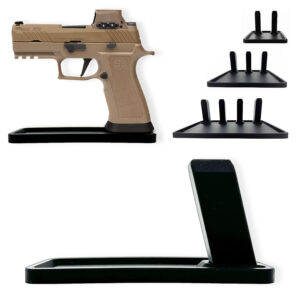
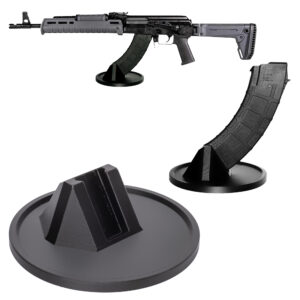


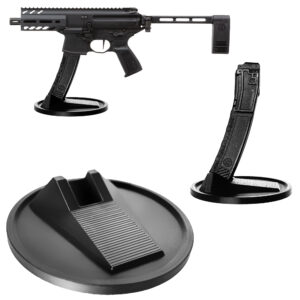
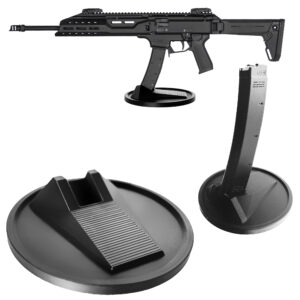
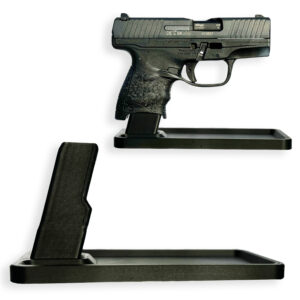

Colt
Colt M4 Carbine
Colt LE6920
Colt AR-15 A4
Daniel Defense
DDM4 V7
DDM4 V9
DDM4 V11
DDM4 ISR (Integrally Suppressed Rifle)
Smith & Wesson (S&W)
M&P15 Sport II
M&P15 Tactical
M&P15T
Bravo Company Manufacturing (BCM)
BCM Recce-16
BCM Recce-14
BCM MCMR Series
Aero Precision
M4E1 Series
AC-15
AR15 Pistol (Various Configurations)
Ruger
Ruger AR-556
Ruger SR-556
Ruger AR-556 MPR (Multi-Purpose Rifle)
Springfield Armory
Saint Victor
Saint Edge
Saint AR-15
PSA (Palmetto State Armory)
PSA PA-15
PSA AR-V
PSA Jakl (AR Pistol)
FN America
FN 15 Tactical Carbine
FN 15 Patrol
FN 15 DMR
Wilson Combat
Recon Tactical
Super Sniper
Protector Carbine
SIG Sauer
SIG M400 Tread
SIG M400 Elite
SIG M400 SDI
LWRC International
IC DI (Direct Impingement)
IC SPR
IC A5
Bushmaster Guns
XM-15 QRC
Bushmaster MOE
XM-15 Patrolman
Rock River Arms
LAR-15 Entry Tactical
LAR-15 Predator
LAR-15 Elite Comp
Stag Arms
Stag 15 Tactical
Stag 15L (Left-Handed Models)
Stag 15 Valkyrie
Noveske Rifleworks
Noveske Gen 4 N4
Noveske Space Invader (AR Pistol)
Noveske Recon
Anderson Manufacturing
AM-15 Optic Ready
AM-15 M4 Carbine
AM-15 Precision Rifle
Adams Arms
AA-15 Piston Rifle
P2 AARS (Adams Arms Rifle Series)
Black Rain Ordnance
SPEC15 Series
BRO Predator
Fallout 15
Diamondback Guns
DB15 Series
DB15CCMLB
DB15EB
Del-Ton Inc.
DTI-15
Del-Ton Echo 316H
Sierra 316M
Windham Weaponry
Windham SRC
Windham VEX-SS
Windham RMCS-4 (Caliber Conversion System)
Christensen Arms
CA-15 G2
CA-15 Recon
CA-15 Titanium Edition
Patriot Ordnance Factory (POF-USA)
Renegade Plus
P415 Edge
Revolution DI
LaRue Tactical
PredatAR
OBR (Optimized Battle Rifle)
LaRue Stealth 2.0
Battle Arms Development
Workhorse Patrol Carbine
BAD556-LW (Lightweight)
Authority Elite Rifle
Faxon Guns
Ascent AR-15
FX-19 (AR Pistol)
Streamline Ultralight Series
KE Arms
KE-15 SLT (Super Lightweight Tactical)
KE-15 Scout Carbine
Primary Weapons Systems (PWS)
MK1 MOD 2-M
MK116 PRO
MK107 (Piston AR Pistol)
ZEV Technologies
ZEV Core Elite Rifle
ZEV AR15 Billet Rifles
Franklin Armory
BFSIII AR-C1
Militia Model
F17-L (Chambered in .17 WSM)
Seekins Precision
SP15 DMR
NX15 Skeletonized Rifle
Havak Bravo
Aero Precision (Additional Models)
EPC-9 (Pistol Caliber ARs)
VG6 AR Rifles
Barrett Guns
REC7 DI
REC7 Gen II
CMMG
MK4 RCE
Resolute 300
Banshee (AR Pistol)
DPMS Panther Arms
Panther Oracle
Panther LR-308
H&K (Heckler & Koch)
HK MR556A1
HK416 (Military Variant)
Rock Island Armory (Armscor)
VR-80 Tactical AR (Shotgun AR Platform)
Troy Industries
Troy SPC-A3
Troy PAR (Pump Action AR)
Wilson Tactical
Tactical Recon AR
Protector Series
F1 Guns
FDR-15 Skeletonized Rifle
BDRx-15 Series
Juggernaut Tactical
JT-15
JT-10 Precision Rifle
AeroSurplus
Surplus AR-15 Rifles (Budget Models)
Thunder Tactical
AR-15 Basic Carbine
Tactical Builder Sets
Radical Guns
RF-15
Forged AR-Series
Dark Storm Industries
DS-15 Featureless Rifles
DS-10 Typhoon
DRD Tactical
Paratus
Aptus AR Rifles
Bear Creek Arsenal
BCA-15
AR Complete Upper Builds
Aero Survival Rifles (ASI)
ASR Tactical Series
Tactical Edge
WARFIGHTER Series
AR-15 Lightweight Rifles
Lone Star Armory
TX15 DMR
TX15 Carbine
HERA Arms
HERA H7
HERA AR-15 Lower Builds
IWI (Israeli Weapon Industries)
Zion-15
DRD Tactical
Tactical Modular Rifles
Quick-Takedown Rifles
V Seven Weapons
1776 Rifle
Hyperlite Rifle
Core Rifle Systems
Core15 Tac III
Core15 Patrol Rifle
Armalite (Original AR-15 Creator)
M15 Tactical
M15 A4 Carbine
DEF15 (Defensive Sporting Rifle Series)
PSA (Palmetto State Armory Additional Models)
PSAK-47 Hybrid (AR-AK Style Hybrid)
PSA Dagger (Pistol Caliber Configurations)
Odin Works
OTR-15
Odin Recon Rifle
Maxim Defense
MDX-508 PDX (Compact AR Pistol)
MDX-510 Rifle